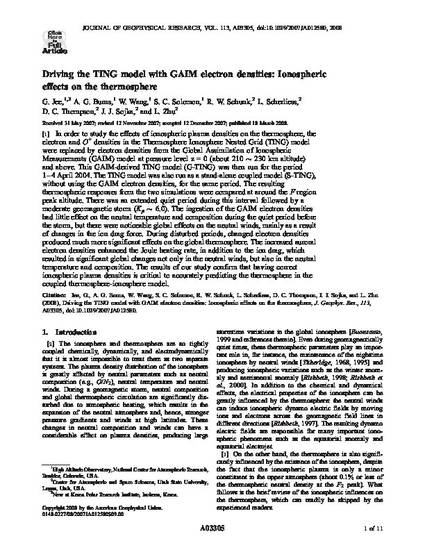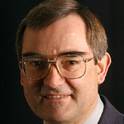
In order to study the effects of ionospheric plasma densities on the thermosphere, the electron and O+ densities in the Thermosphere Ionosphere Nested Grid (TING) model were replaced by electron densities from the Global Assimilation of Ionospheric Measurements (GAIM) model at pressure level z = 0 (about 210 ~ 230 km altitude) and above. This GAIM-derived TING model (G-TING) was then run for the period 1–4 April 2004. The TING model was also run as a stand-alone coupled model (S-TING), without using the GAIM electron densities, for the same period. The resulting thermospheric responses from the two simulations were compared at around the F region peak altitude. There was an extended quiet period during this interval followed by a moderate geomagnetic storm (Kp ~ 6.0). The ingestion of the GAIM electron densities had little effect on the neutral temperature and composition during the quiet period before the storm, but there were noticeable global effects on the neutral winds, mainly as a result of changes in the ion drag force. During disturbed periods, changed electron densities produced much more significant effects on the global thermosphere. The increased auroral electron densities enhanced the Joule heating rate, in addition to the ion drag, which resulted in significant global changes not only in the neutral winds, but also in the neutral temperature and composition. The results of our study confirm that having correct ionospheric plasma densities is critical to accurately predicting the thermosphere in the coupled thermosphere-ionosphere model.
